Equilateral Polygons, Shapes of Ring Polymers, and an Application to Frame Theory
/osu18
This talk!
Statistical physics viewpoint
A polymer in solution takes on an ensemble of random shapes, with topology as the unique conserved quantity.
Modern polymer physics is based on the analogy between a polymer chain and a random walk.
– Alexander Grosberg

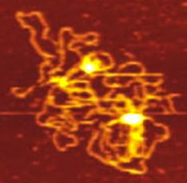
Protonated P2VP
Roiter/Minko
Clarkson University
Plasmid DNA
Alonso–Sarduy, Dietler Lab
EPF Lausanne
Key Idea
Loop \(\Leftrightarrow\) point in some (nice!) conformation space
Knowledge of the (differential, symplectic, algebraic) geometry of these conformation spaces leads to both
theorems and fast numerical algorithms.
Grassmannians...
As in Erik’s talk, points in the Grassmannian \(\mathrm{Gr}_2(\mathbb{C}^n)\) are conformations of closed, framed polygons in \(\mathbb{R}^3\).
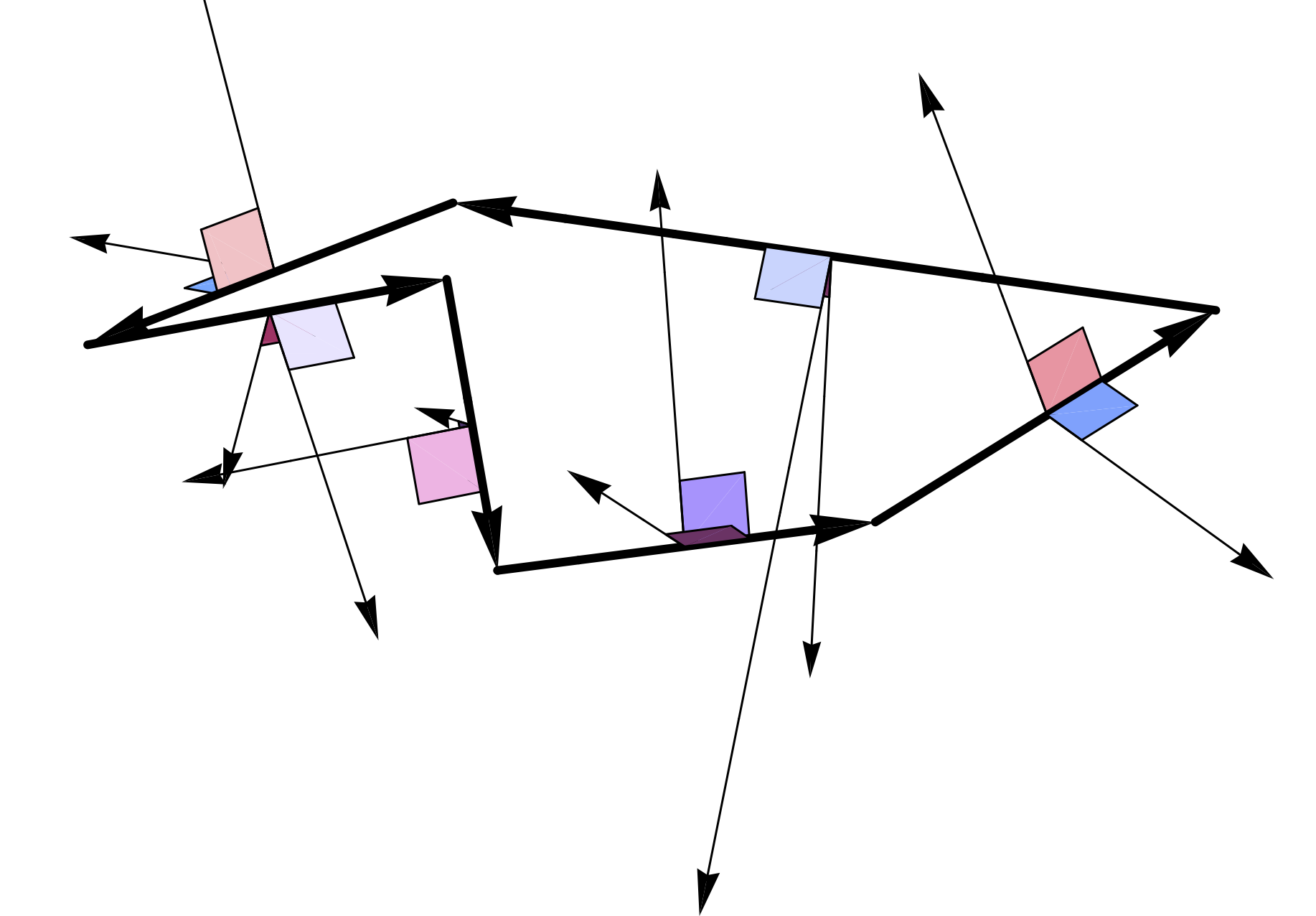
Independently spinning the frames corresponds to the action by the torus of diagonal elements of \(U(n)\).
Think of this as a discrete, 3-dimensional version of Younes–Michor–Shah–Mumford’s shape space. Tom has developed the smooth version.

Torus Action
Scalar matrices act trivially on \(\mathrm{Gr}_2(\mathbb{C}^n)\), so there is an effective \(U(1)^{n-1}\) action, and \(\mathrm{Gr}_2(\mathbb{C}^n)/U(1)^{n-1}\) is the space of closed polygons in \(\mathbb{R}^3\).
This is not a symplectic or algebraic operation:
To get symplectic/algebraic geometry, need to take the symplectic reduction/GIT quotient
which depends on a choice of moment map fiber/line bundle, but is a symplectic manifold/projective variety.
Fixing Edgelengths
Geometrically, this choice is equivalent to choosing the lengths \(r_1,\ldots , r_n\) of the edges in the polygon.
Definition. \(\mathrm{Pol}(n,r) := \mathrm{Gr}_2(\mathbb{C}^n)/\!/\!_r U(1)^{n-1}\) is the conformation space of closed polygons in \(\mathbb{R}^3\) with edgelength vector \(r=(r_1,\ldots , r_n)\).
In polymer physics, primarily interested in equilateral polygons, i.e., the space \(\mathrm{ePol}(n) := \mathrm{Pol}(n,(1,\ldots , 1))\).

Equilateral Polygons
This is the space of arclength-parametrized discrete closed curves in \(\mathbb{R}^3\). See Millson–Zombro for the generalization to smooth or Lipschitz closed curves.
Symmetries
The Gelfand–Tsetlin integrable system on \(\mathrm{Gr}_2(\mathbb{C}^n)\) descends to \(n-3\) commuting symmetries on \(\mathrm{Pol}(n,r)\).


The corresponding conserved quantities are the distances \(d_i\) from the first vertex to the \((i+2)\)nd vertex.
A polytope
The \((n-3)\)-dimensional moment polytope \(\mathcal{P}_n \subset \mathbb{R}^{n-3}\) is defined by the triangle inequalities
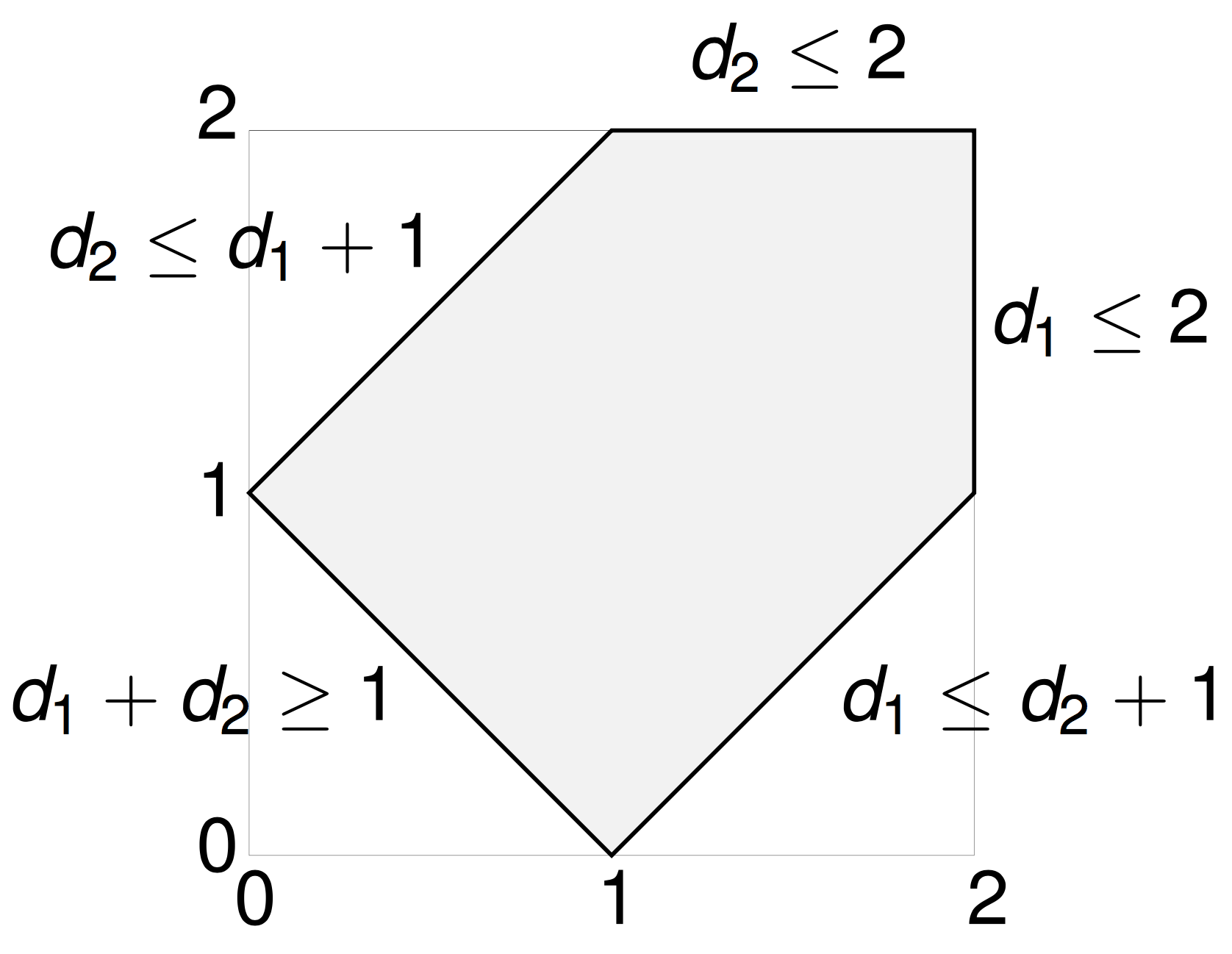
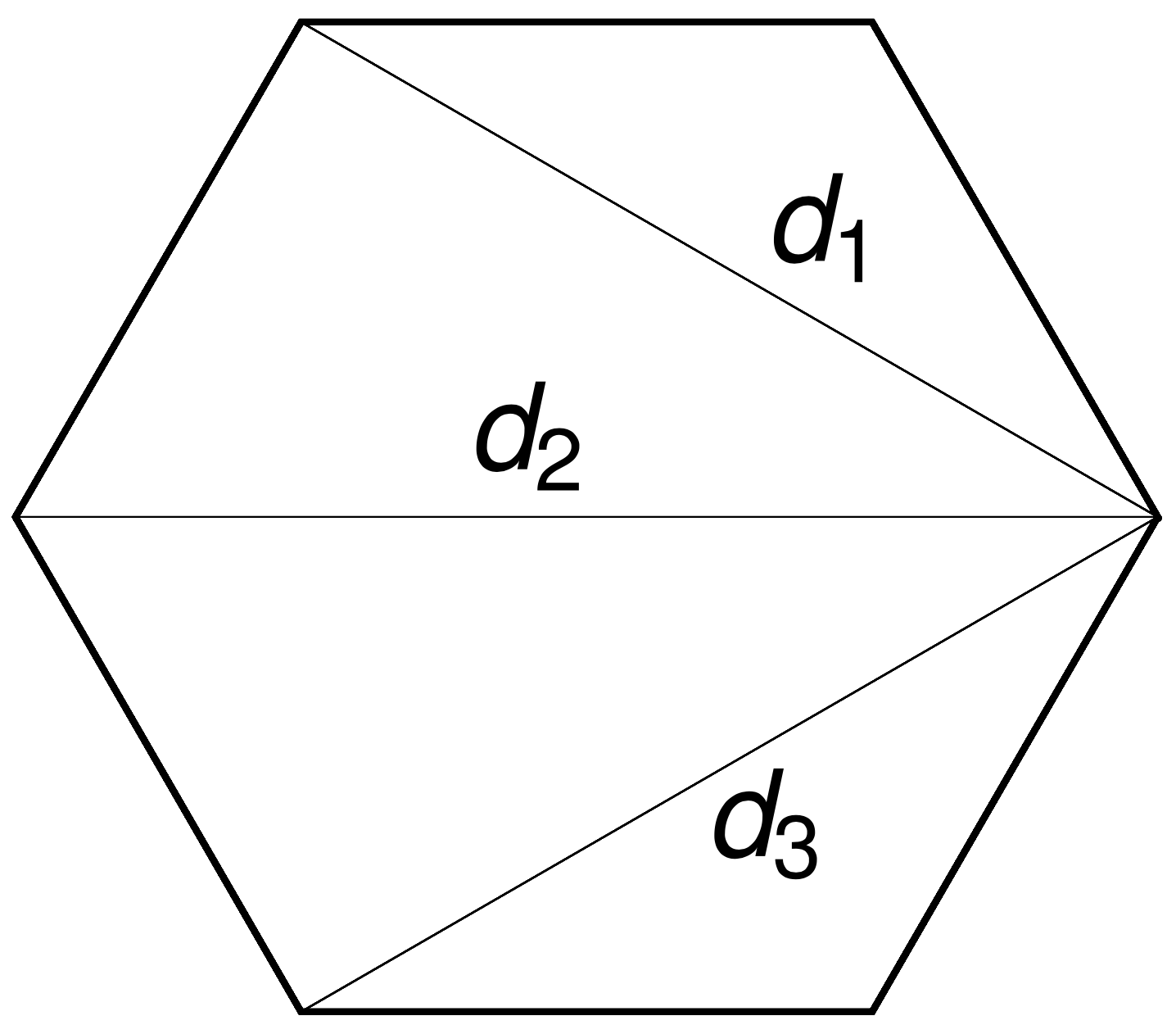
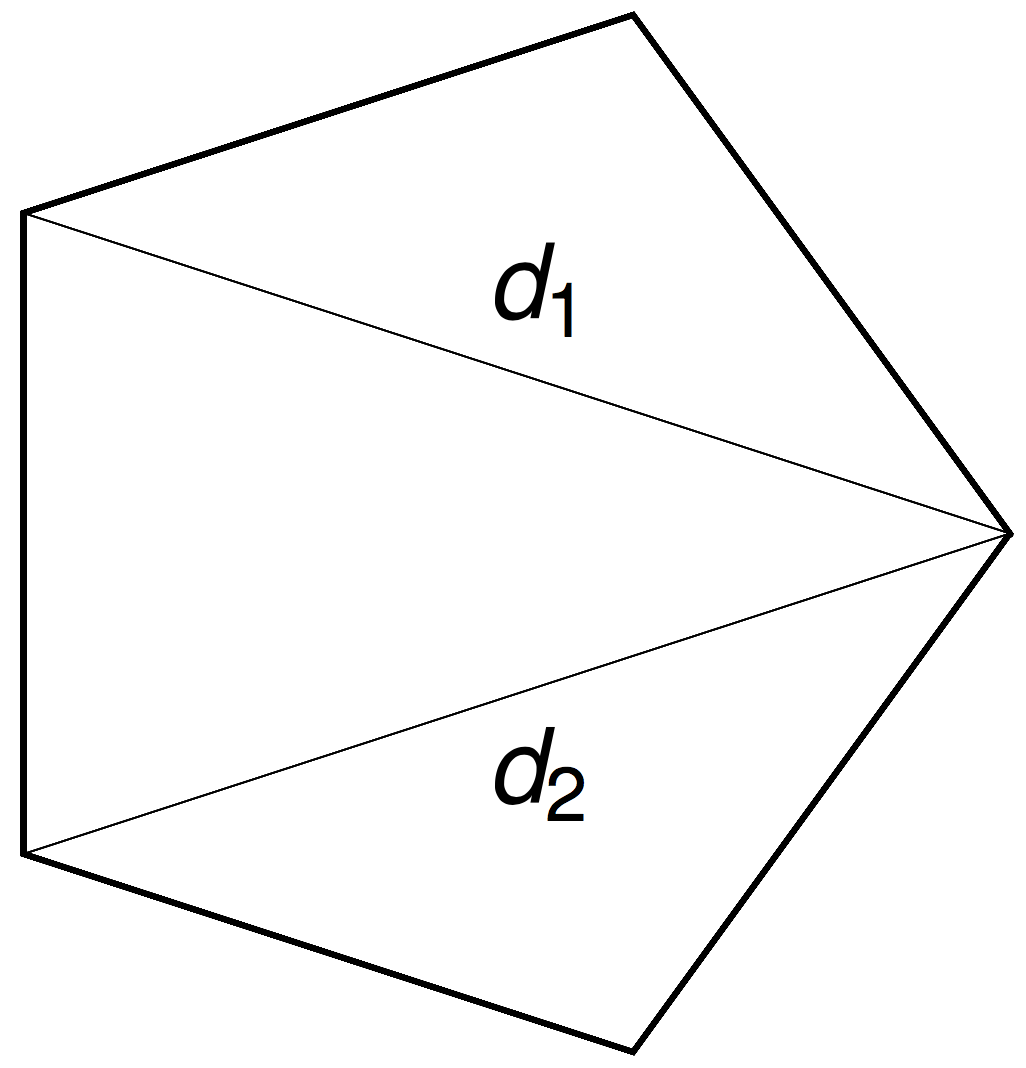
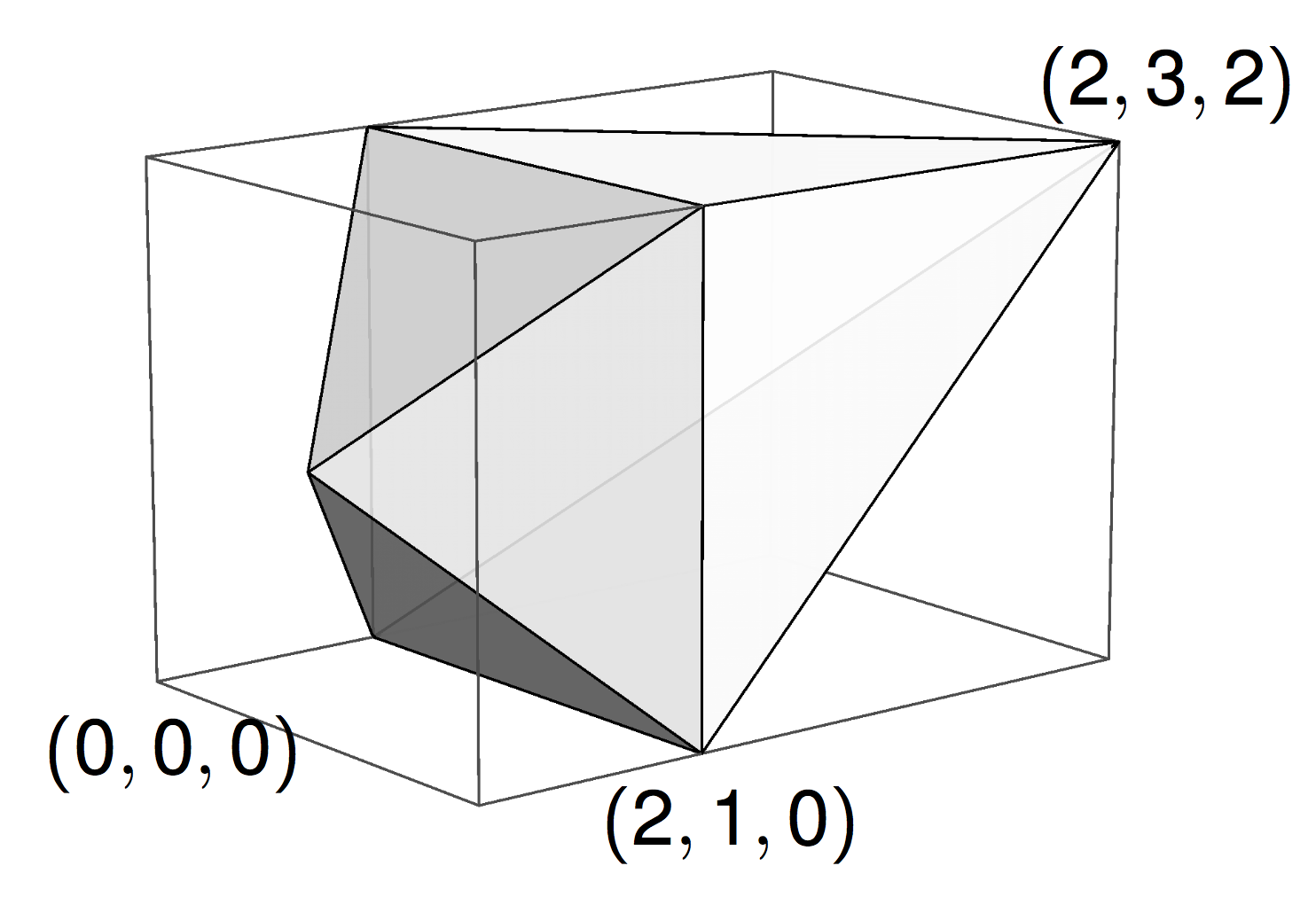
Sampling
Theorem (with Cantarella, 2016)
The joint distribution of \(d_1,\ldots , d_{n-3}\) is uniform on \(\mathcal{P}_n\) and \(\theta_1, \ldots , \theta_{n-3}\) are each uniform on \([0,2\pi]\).
Corollary
Any algorithm for sampling the convex polytope \(\mathcal{P}_n\subseteq \mathbb{R}^{n-3}\) gives an algorithm for sampling \(\mathrm{ePol}(n)\).
A Sampling Algorithm
Introduce fake chordlengths \(d_0=1=d_{n-2}\) and make the linear change of variables
\(s_i = d_i - d_{i-1} \text{ for } 1 \leq i \leq n-2\).
Then \(\sum s_i = d_{n-2} - d_0 = 0\), so \(s_{n-2}\) is determined by \(s_1, \ldots , s_{n-3}\)
and the inequalities
become
\(-1 \leq s_i \leq 1, -1 \leq \sum_{i=1}^{n-3} s_i \leq 1\)
\(\sum_{j=1}^i s_j + \sum_{j=1}^{i+1}s_j \geq -1\)
The polytope is surprisingly large!
Let \(\mathcal{C}_n \subset \mathbb{R}^{n-3}\) be determined by
\(-1 \leq s_i \leq 1, -1 \leq \sum_{i=1}^{n-3} s_i \leq 1\)
\(\sum_{j=1}^i s_j + \sum_{j=1}^{i+1}s_j \geq -1\)
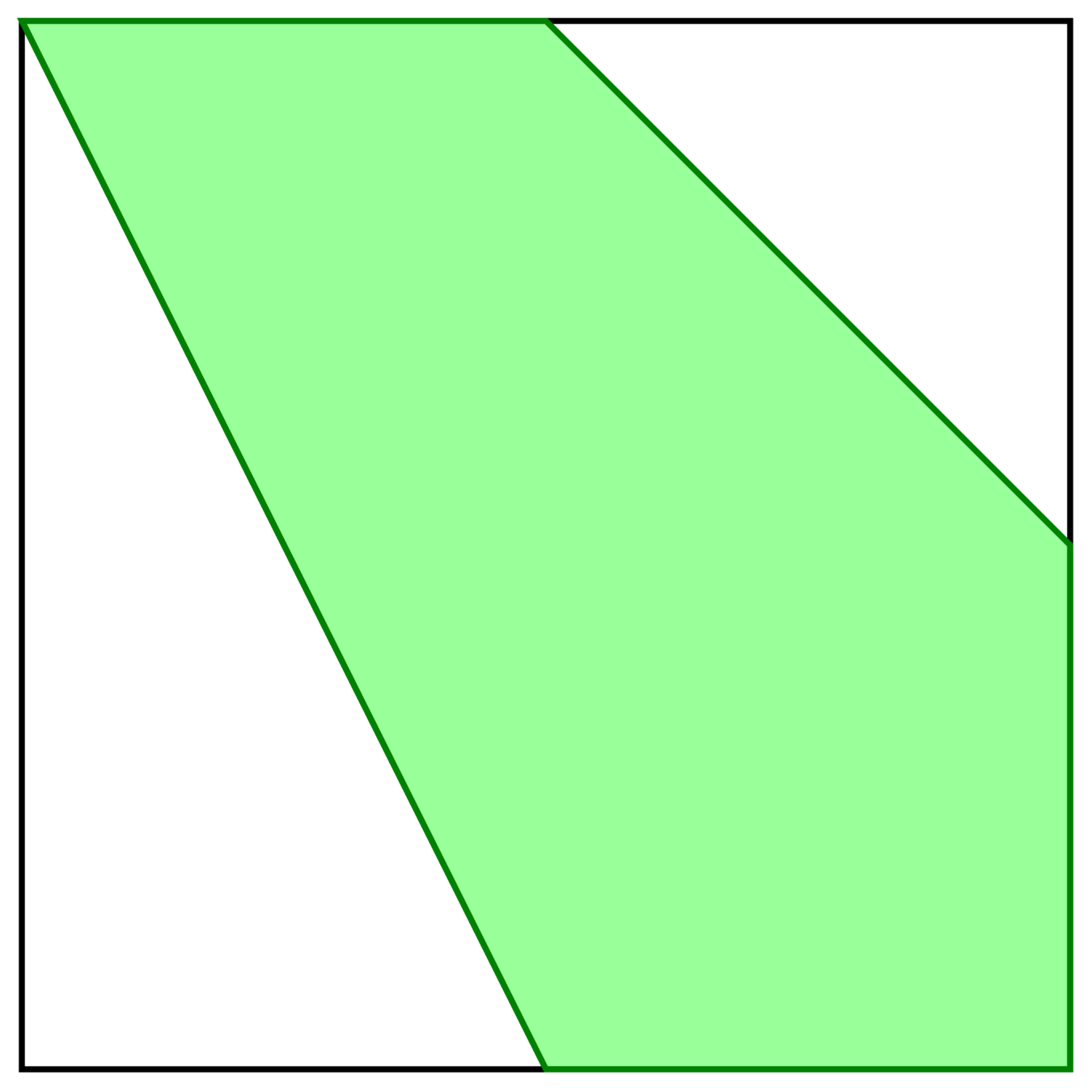
\(\mathcal{C}_5\)
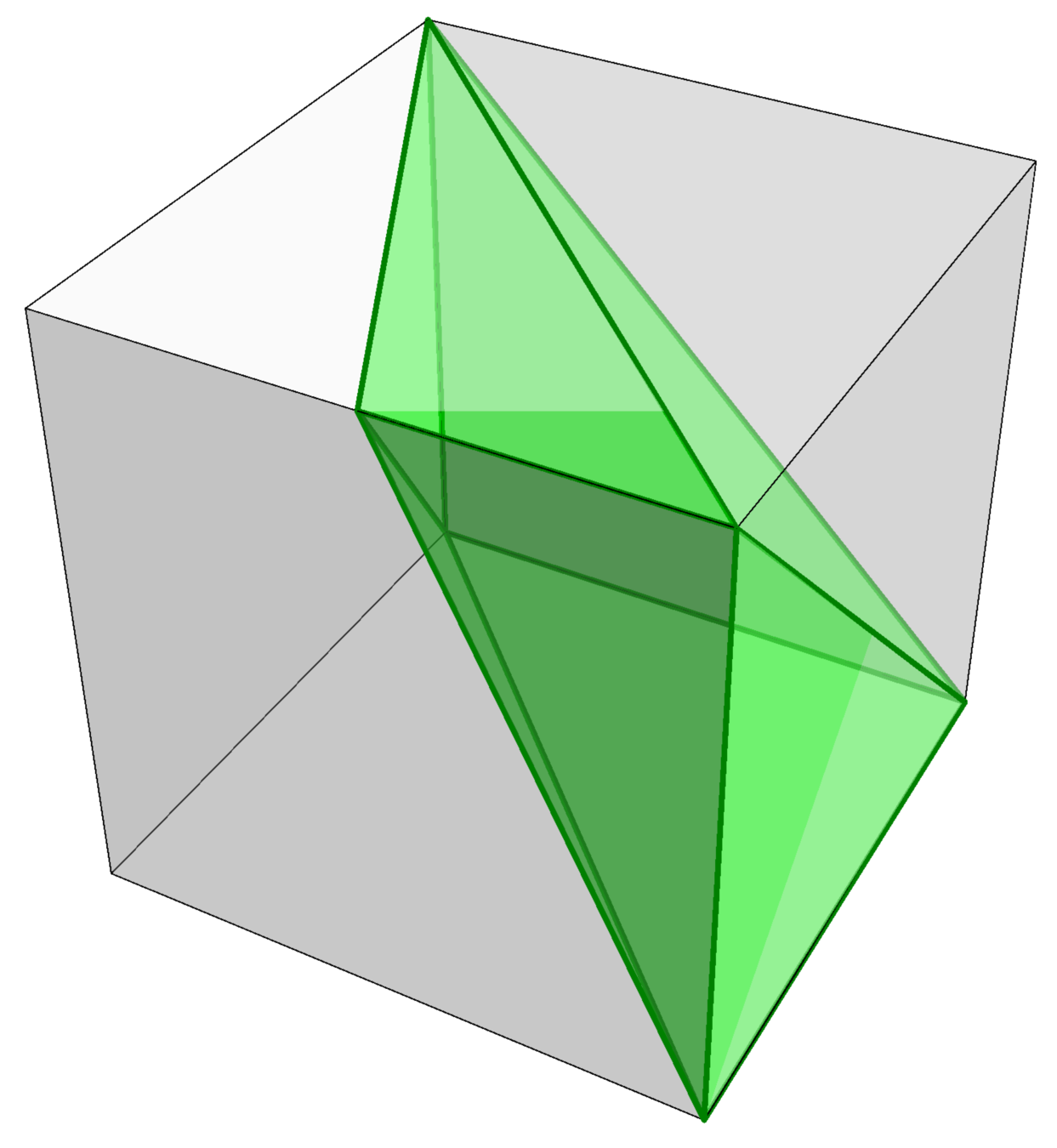
\(\mathcal{C}_6\)
Proposition (with Cantarella, Duplantier, Uehara, 2016)
The probability that a point in the hypercube lies in \(\mathcal{C}_n\) is asymptotic to
\(6 \sqrt{\frac{6}{\pi}}\frac{1}{n^{3/2}}\)
Direct sampling
Action-Angle Method
Theorem (with Cantarella, Duplantier, Uehara, 2016)
The action-angle method directly samples polygon space in expected time \(\Theta(n^{5/2})\).
- Generate \((s_1,\ldots , s_{n-3})\) uniformly on \([-1,1]^{n-3}\)
- Test whether \((s_1,\ldots , s_{n-3})\in \mathcal{C}_n\)
- Change to \((d_1, \ldots , d_{n-3})\) coordinates
- Generate dihedral angles from \(T^{n-3}\)
- Build corresponding polygon
\(O(n)\) time
acceptance probability \(\sim \frac{1}{n^{3/2}}\)
RandomDiagonals[n_] :=
Accumulate[
Join[{1}, RandomVariate[UniformDistribution[{-1, 1}], n]]];
InMomentPolytopeQ[d_] :=
And[Last[d] >= 0, Last[d] <= 2,
And @@ (Total[#] >= 1 & /@ Partition[d, 2, 1])];
DiagonalSample[n_] := Module[{d},
For[d = RandomDiagonals[n], ! InMomentPolytopeQ[d], ,
d = RandomDiagonals[n]];
d[[2 ;;]]
];
Diagonal sampling in 3 lines of code
A random 10,000-gon
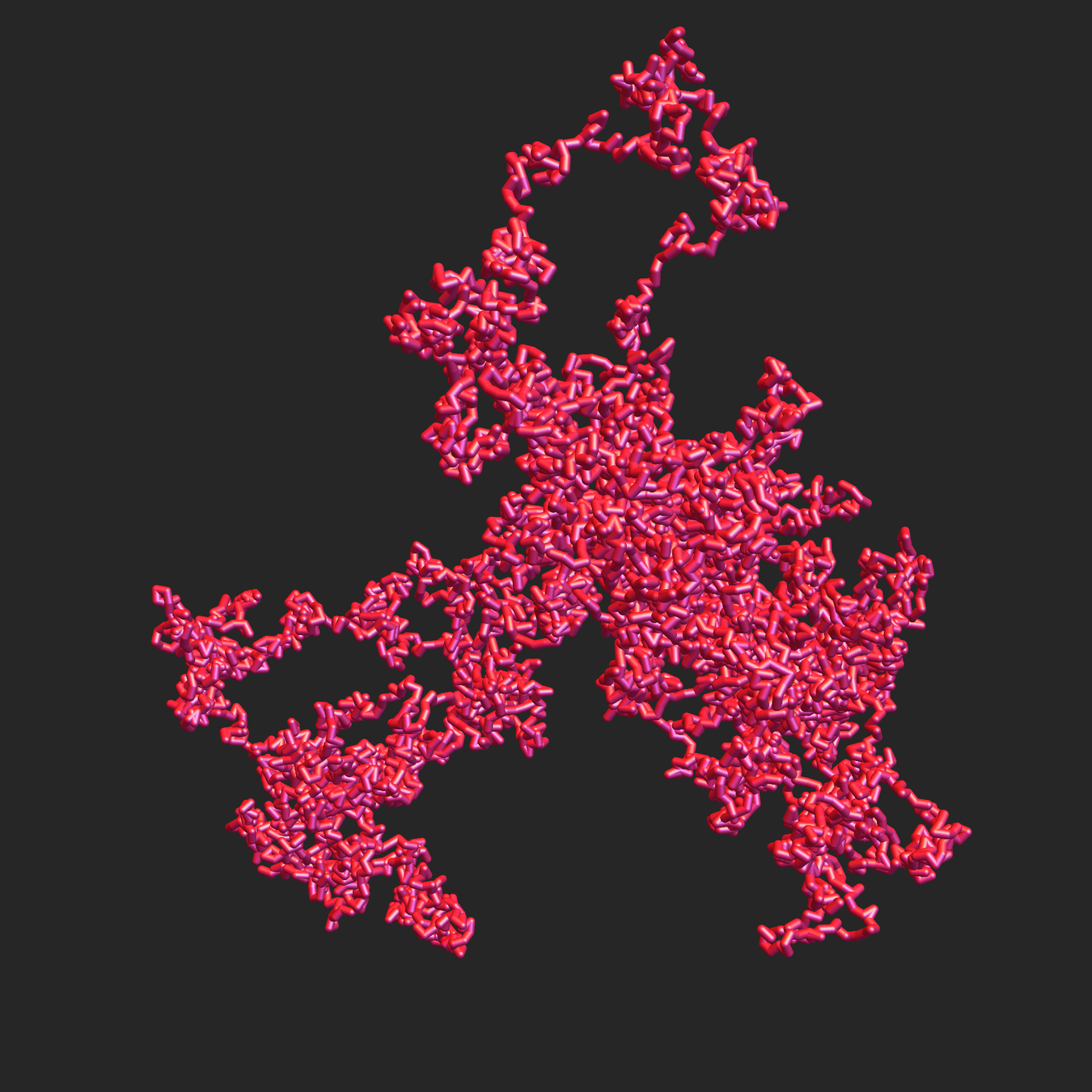
Frames
Definition. A frame in a Hilbert space \(\mathcal{H}\) is a collection \(\{f_i\}\) of elements of \(\mathcal{H}\) so that
for all \(x \in \mathcal{H}\). If \(A=B\), the frame is tight. If \(\mathcal{H} = \mathbb{R}^d\) or \(\mathbb{C}^d\), the frame is finite. If \(\|f_i\|=1\) for all \(i\), the frame is unit norm. Finite unit norm tight frames are called FUNTFs.
Lemma. A frame \(F\) in \(\mathbb{C}^d\) is tight \(\Leftrightarrow\) \(T_F^*T_F = \lambda \mathbb{I}_d\).
A finite frame \(F\) in \(\mathbb{C}^d\) has corresponding analysis operator \(T_F: \mathbb{C}^d \to \mathbb{C}^n\) given by \(T_F(v) = (\langle v, f_1\rangle, \ldots , \langle x, f_n\rangle)\), synthesis operator \(T_F^*\), and frame operator \(T_F^*T_F\).
Example. The Mercedes–Benz frame in \(\mathbb{R}^2\) is a FUNTF.

Lemma. A FUNTF in \(\mathbb{C}^d\) has \(T_F^*T_F=\frac{n}{d}\mathbb{I}_d\).
FUNTFs
\(\mathcal{F}^n_{\frac{n}{d} \mathbb{I}_d} =\{F \subseteq \mathbb{C}^d : T_F^*T_F=\frac{n}{d}\mathbb{I}_d\} \simeq \mathrm{St}_d(\mathbb{C}^n) \), the Stiefel manifold of orthonormal \(d\)-frames in \(\mathbb{C}^n\), and hence \(U(d)\backslash \mathcal{F}^n_{\frac{n}{d}\mathbb{I}_d} \simeq \mathrm{Gr}_d(\mathbb{C}^n)\).
If \(S\) is an invertible, positive definite, Hermitian \(d \times d\) matrix, let \(\mathcal{F}^n_S := \{F = \{f_i\}_{i=1}^n \subseteq \mathbb{C}^d : T_F^*T_F=S\}\)
Let \(\mathcal{F}^n_S(r)\subseteq\mathcal{F}^n_S\) be the space of frames with frame operator \(S\) and \(\|f_i\| = r_i\) for all \(i\).
Proposition. \(U(d)\backslash\mathcal{F}^n_{\frac{n}{d}\mathbb{I}_d}(r)/U(1)^{n-1} \simeq \mathrm{Gr}_d(\mathbb{C}^n)/\!/\!_r U(1)^{n-1}=\mathrm{Pol}(n,r)\)
FUNTFs in \(\mathbb{C}^2\)
Theorem (2018)
A modification of the action-angle algorithm directly samples FUNTFs in \(\mathbb{C}^2\) in \(\Theta(n^{5/2})\) time.
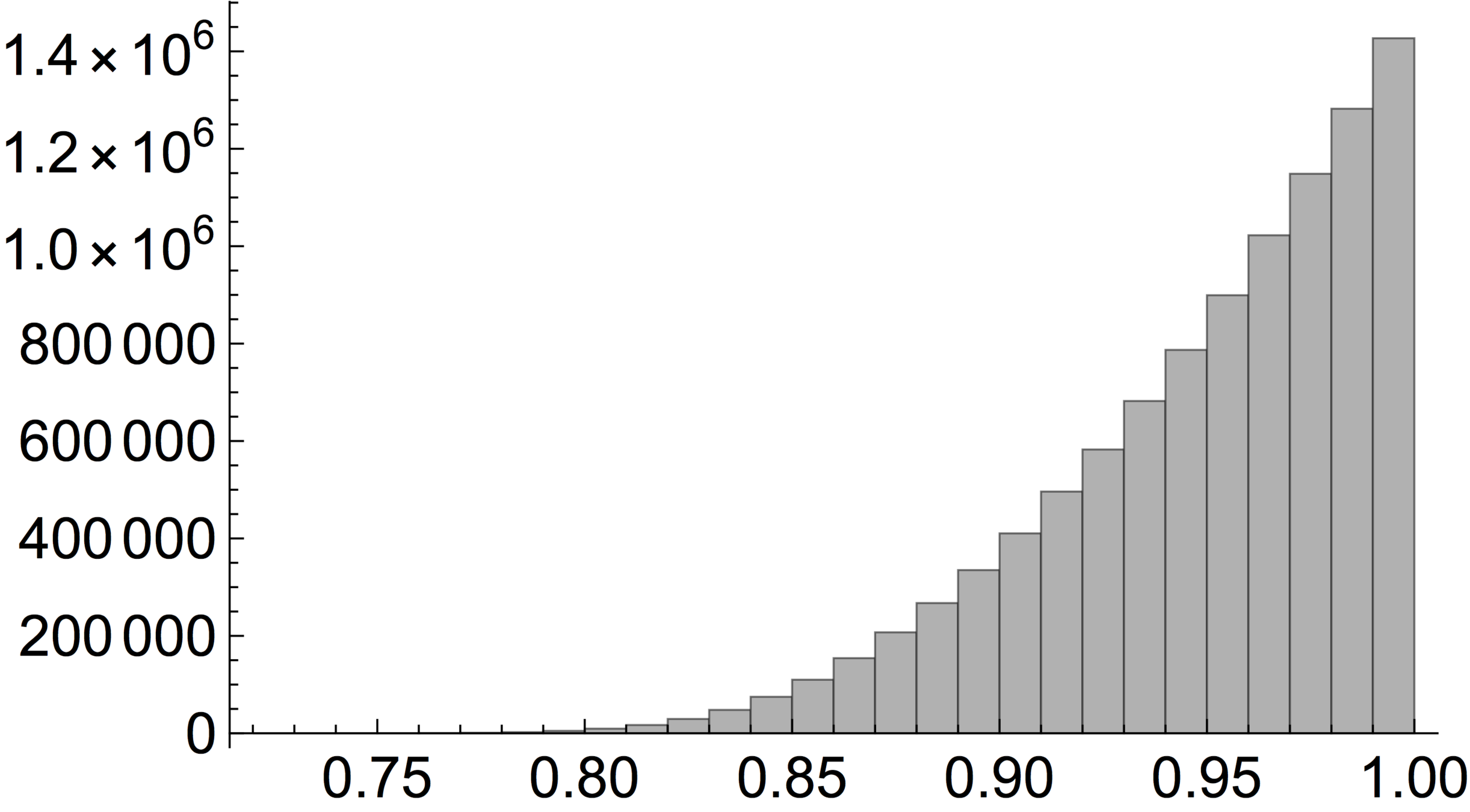
Equilateral polygons in \(\mathbb{R}^3\) lift to FUNTFs in \(\mathbb{C}^2\)!
Histogram of coherences of length-6 FUNTFs in \(\mathbb{C}^2\)
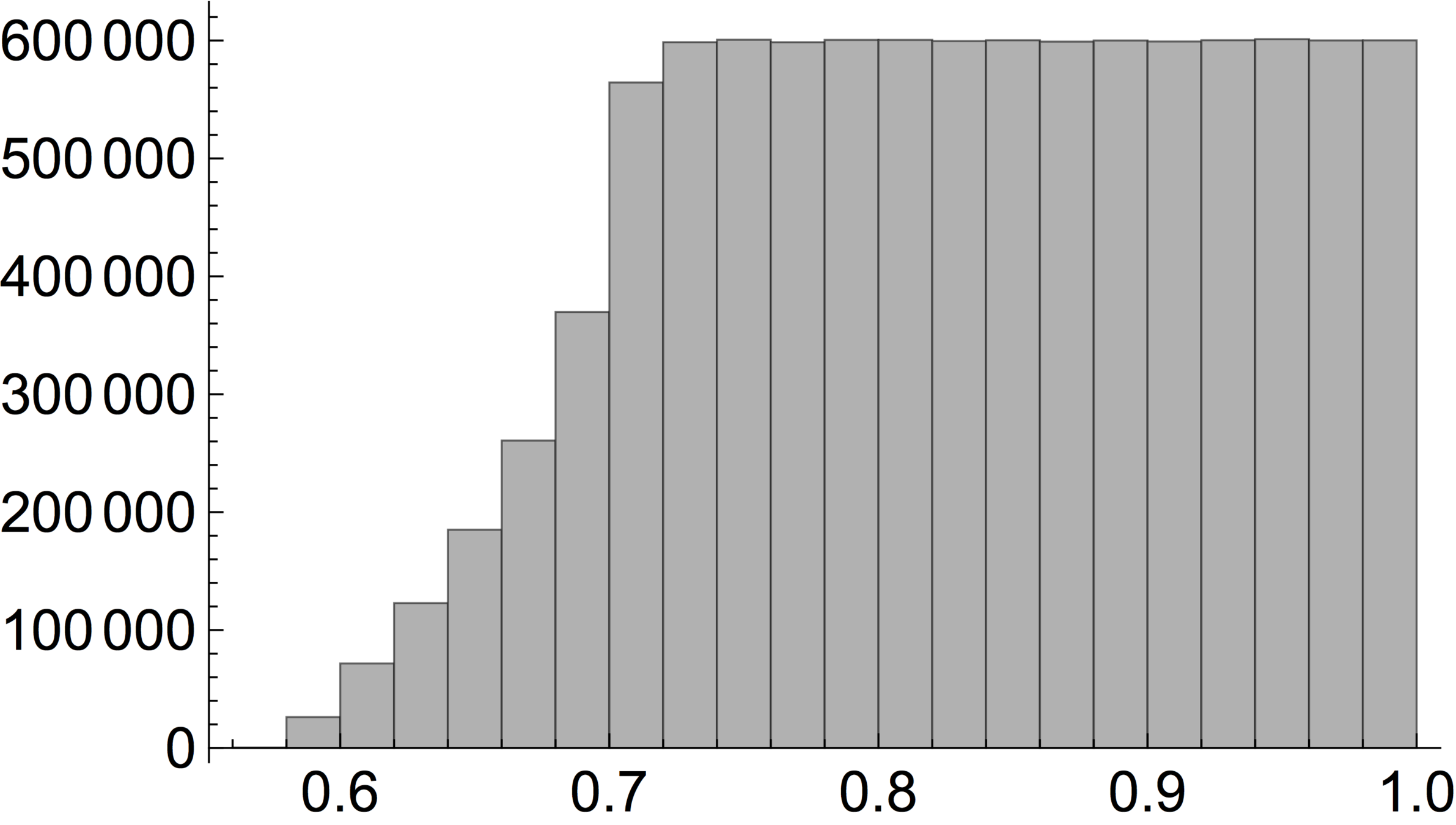
Histogram of coherences of length-4 FUNTFs in \(\mathbb{C}^2\)
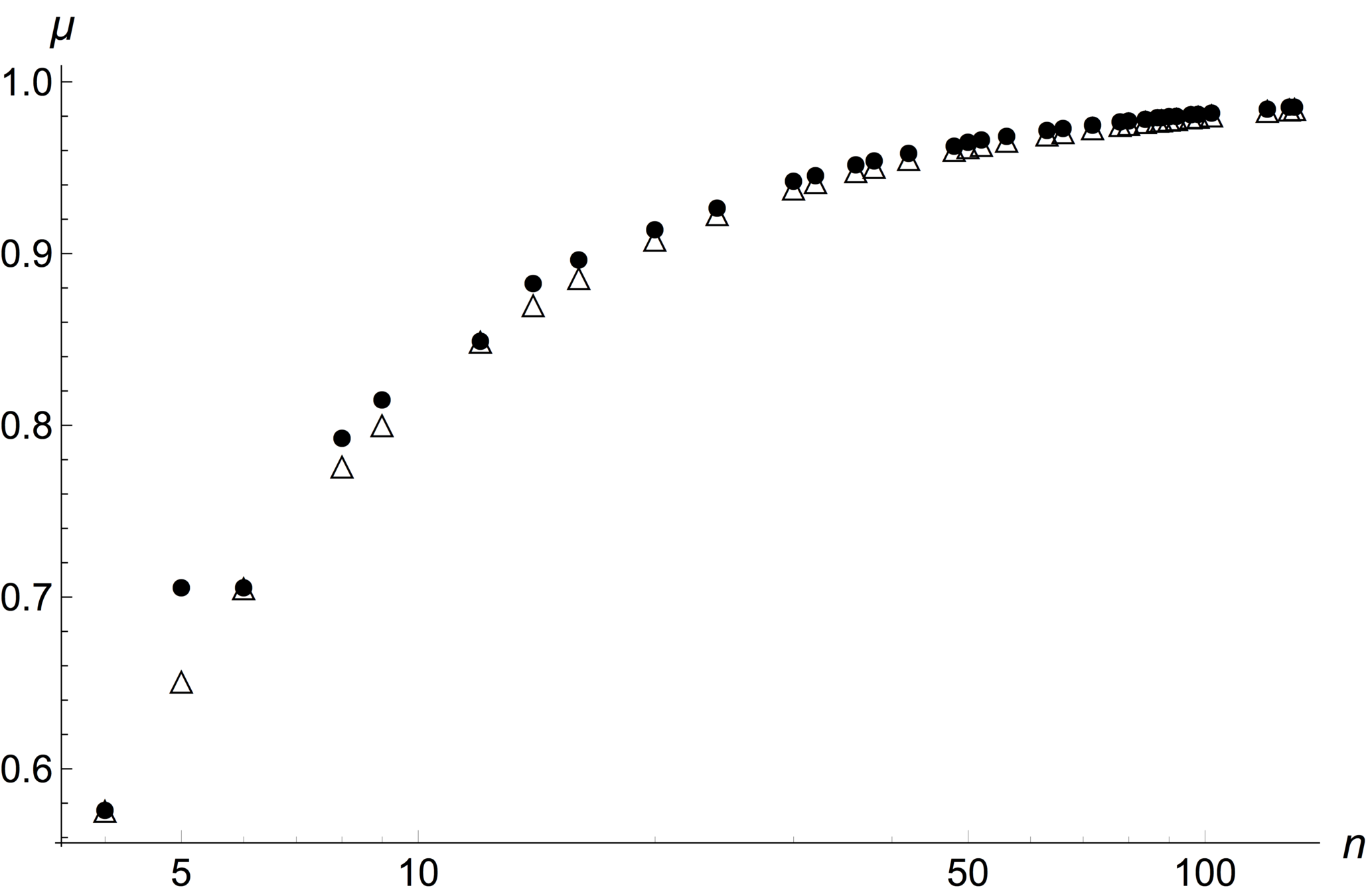
Coherences of lifts of Sloane's optimal point packings \(S^2\), compared to the Toth bound
More generally...
Similar symplectic reasoning leads to:
Theorem (with Needham, 2018)
If \(S\) is an invertible, positive-definite, \(d \times d\) matrix, the space \(\mathcal{F}^n_S(r)\) (of length-\(n\) frames in \(\mathbb{C}^d\) with frame operator \(S\) and \(\|f_i\|=r_i\)) is path-connected.
This generalizes Cahill, Mixon, and Strawn’s (2017) resolution of the frame homotopy conjecture, which showed that the space of FUNTFs in \(\mathbb{C}^d\) is path-connected.
Problems
- Does distance in the Grassmannian serve as a reasonable proxy for structural similarity physical loops (e.g., ring biopolymers)?
- What is going on with coherences of length-4 FUNTFs in \(\mathbb{C}^2\)?
- Is there a (fast) sampling algorithm for FUNTFs in \(\mathbb{C}^d\)?
- What is the corresponding 2D/real story?
Thank you!
References
The symplectic geometry of closed equilateral random walks in 3-space
J. Cantarella & C. Shonkwiler
Annals of Applied Probability 26 (2016), no. 1, 549–596
A fast direct sampling algorithm for equilateral closed polygons
J. Cantarella, B. Duplantier, C. Shonkwiler, & E. Uehara
Journal of Physics A 49 (2016), no. 27, 275202
Funding: Simons Foundation
Symplectic geometry of spaces of frames
T. Needham & C. Shonkwiler
In preparation